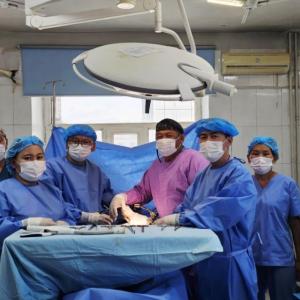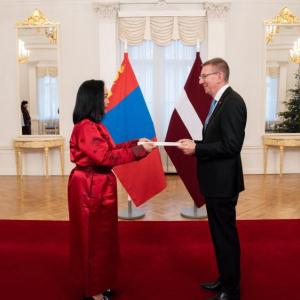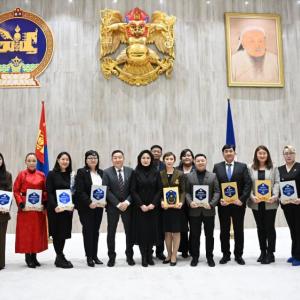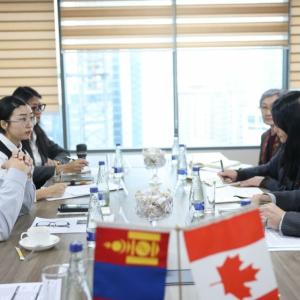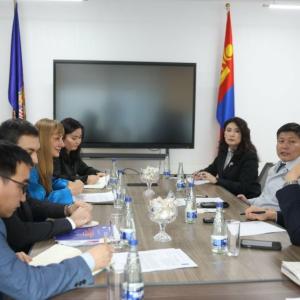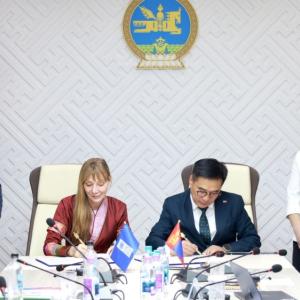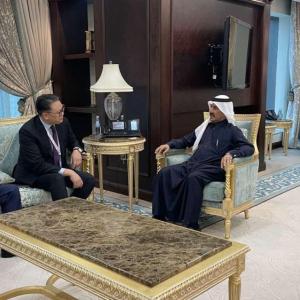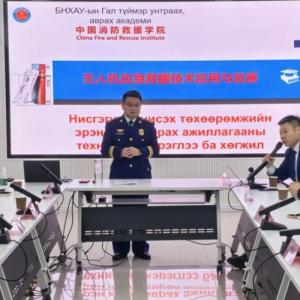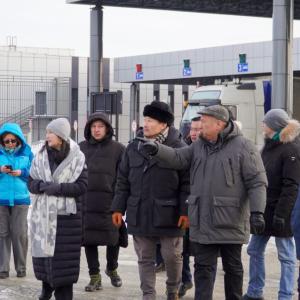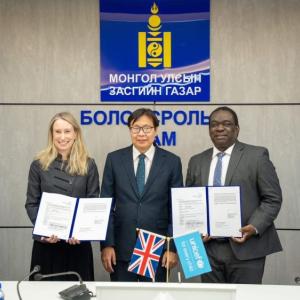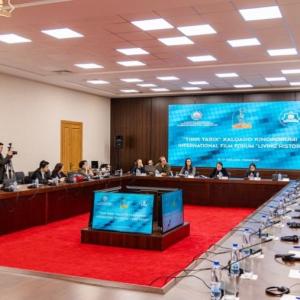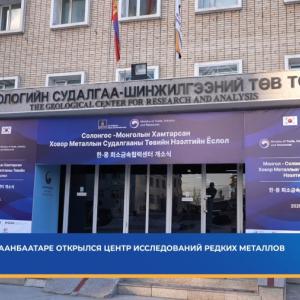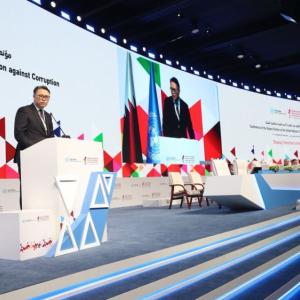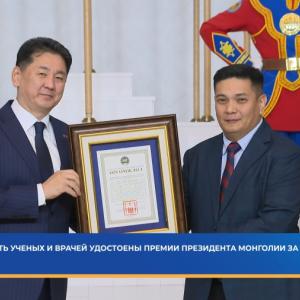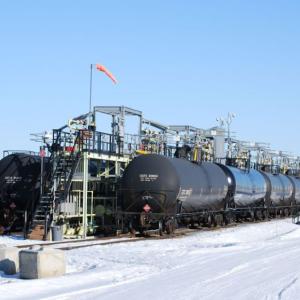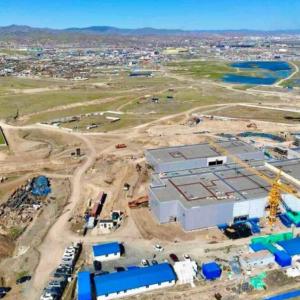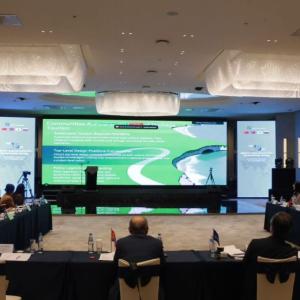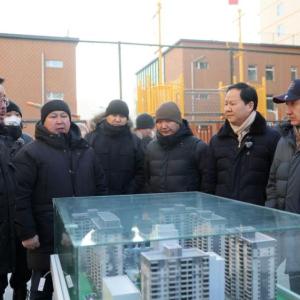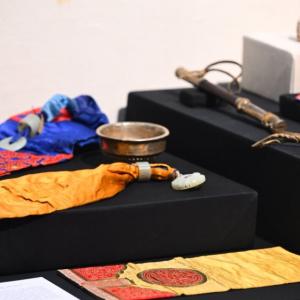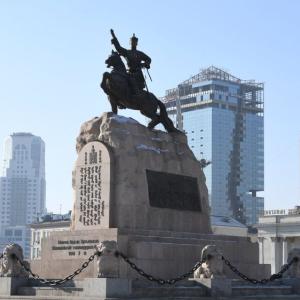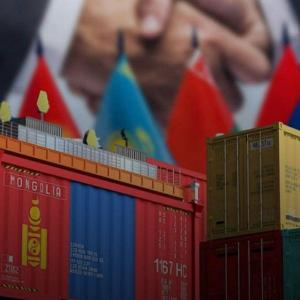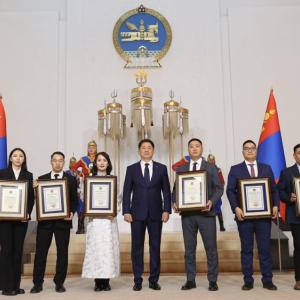Ts.Baatar: Kazakhstan is our closest third neighbor, both geographically and in terms of historical ties
Politics
It has been over 30 years since the establishment of diplomatic relations between Mongolia and Kazakhstan. Could you highlight any significant milestones in the development of our bilateral relations?
Indeed, after the collapse of the Soviet Union and the independence of the Republic of Kazakhstan in 1991, Mongolia recognized Kazakhstan, establishing diplomatic relations on January 22, 1992. That same year, Mongolia opened its Embassy in Almaty, attaching a high significance to its bilateral relations. Later, as the capital of Kazakhstan was moved to Astana in 2010, the Embassy of Mongolia has since operated in the new capital. On the other hand, Kazakhstan opened its diplomatic mission in Mongolia in 1997, and established its Embassy in Ulaanbaatar in 2007. Although Mongolia and Kazakhstan are noncontiguous states, it is noteworthy that the distance between the westernmost point of Mongolia and the easternmost point of Kazakhstan is just about 40 kilometers. This geographical proximity, combined with our historical ties, positions Kazakhstan as Mongolia’s closest “third neighbor.”
The past years can be characterized as the years of development of relations and cooperation between political and legislative bodies of the two countries.
Specifically, President of Mongolia Bagabandi Natsag paid a State Visit to Kazakhstan in 1998, President of Mongolia Enkhbayar Nambar in 2007, and Prime Minister of Mongolia Khurelsukh Ukhnaa in 2019, respectively. Likewise, President of the Republic of Kazakhstan Nursultan Nazarbayev paid official visits to Mongolia in 1993, 1999, and 2008. Furthermore, in August of 2002, the Deputy Chairman of the Mazhilis, the lower house of the Parliament of Kazakhstan, visited Mongolia, while a Mongolian parliamentary delegation headed by the Chairman of the State Great Khural of Mongolia visited Kazakhstan in December 2003.

As high-level visits between state and legislative bodies of the two countries have developed steadily, intergovernmental and interministerial cooperation has parallelly strengthened over the years. Particularly, in October of 2021, Minister of Foreign Affairs of Mongolia Battsetseg Batmunkh paid an official visit to Kazakhstan, highlighted as the first official visit by Mongolian Foreign Minister to Kazakhstan since the establishment of diplomatic relations between the two countries in 1992. During the visit, the 2021-2024 Plan for Cooperation between the Foreign Ministries of Mongolia and Kazakhstan and a Memorandum between the Ministry of Foreign Affairs of Mongolia and the Ministry of Trade and Integration of Kazakhstan were signed. Besides these documents, a Memorandum was signed between “Hunnu Air” Mongolian Airlines and “SCAT” Kazakh Airlines, which is of high significance in the development of cooperation in the aviation sector.
Additionally, during the visit, as part of the development of bilateral trade and economic cooperation, the two sides discussed numerous issues, including increasing the supply of export goods such as meat and meat products from Mongolia to Kazakhstan and countries in the region, studying and domesticating drought-resistant crop varieties, intensifying the cooperation between veterinary and plant quarantine institutions, leveraging the geographical location connecting Asia and Europe to benefit from transit transportation as landlocked countries.
As a result of repeated mutual high-level visits mentioned above, around 50 agreements and contracts to regulate the legal environment of bilateral cooperation have been signed. In the economic sector, the Intergovernmental Agreement on Trade, Economic Cooperation, and Payment between Mongolia and the Republic of Kazakhstan signed in 1992, and the Intergovernmental Agreement on Mutual Exemption from Double Taxation can be highlighted.
What are the similar features of diplomatic relations between Mongolia and Kazakhstan?
The diplomatic relations of our two countries share similarities in developing friendly relations with countries and contributing to ensuring peace and security. Both countries have established diplomatic relations with almost all nations in the world under the 1961 Vienna Convention on Diplomatic Relations. The two nations pursue peaceful, open, independent, and multi-pillared foreign policies. Yet, Kazakhstan’s foreign policy and activities are more extensive in scope compared to ours. While Mongolia prioritizes the policy of maintaining balance between its two major neighbors, and third neighbors, Kazakhstan defines its policy in a wider dimension.
The foreign policy of Kazakhstan is characterized by a multi-faceted, peaceful, balanced, and pragmatic approach. For the past three decades, Kazakhstan has consistently upheld and successfully implemented this policy, putting emphasis on friendly relations with its two major neighbors, Russia and China, as well as with the United States, Western countries, and the Islamic world. Particularly in relations with Moscow, Beijing, and Washington, Kazakhstan maintains a balanced approach, adhering to an actively neutral foreign policy strategy regarding regional and global events. This balanced approach has strengthened its geopolitical position both regionally and globally. Notably, it has made history as the first Central-Asian country to chair the Organization for Security and Cooperation in Europe.
Kazakhstan participates actively in several important international organizations, including the United Nations (UN,) the World Trade Organization (WTO,) the Commonwealth of Independent States (CIS,) the Shanghai Cooperation Organization (SCO,) the Eurasian Economic Union (EAEU,) the Collective Security Treaty Organization (CSTO,) the Organization for Security and Cooperation in Europe (OSCE,) the Astana Conference on Interaction and Confidence-Building Measures in Asia (CICA,) and the Organization of Islamic Cooperation (OIC.) This engagement further enhances its geostrategic position.
The pragmatic and multi-faceted policy allows Kazakhstan to join the world community, promoting its national interests effectively, and creating favorable external conditions for solving economic issues.
In your opinion, which sector is lacking in expanding traditional friendly relations between the two countries?
Over the past 30 years, we have not fully capitalized on the vast opportunities for trade and economic cooperation with Kazakhstan. It often feels as though we have let these opportunities slip by without really seeing them. There was a potential to reduce our dependence on fuel. We have significant untapped resources for increasing the efficiency of transport corridor to western countries, developing the Free Economic Zone in Tsagaan Nuur, promoting tourism regarding the features of western regions, in particular, Bayan-Ulgii aimag, attracting investment in the agricultural sector, and establishing a joint small and medium-sized enterprise. Although all these topics have been discussed at the level of bilateral meetings, there have been no tangible results to date. I wonder if we are not making enough effort in this regard. There are numerous opportunities for fostering trust and cooperation between our two peoples that we should leverage for mutual benefit.
The President of Kazakhstan is set to pay a State Visit to our country. How do you envision the results of this visit? What significance do you think this visit will have for political relations and other sectors?
I believe that President of Kazakhstan Kassym-Jomart Tokayev’s upcoming visit will elevate the traditional friendly relations between Mongolia and Kazakhstan to the Strategic Partnership. President Tokayev has visited Mongolia twice before, in 2006 as the Foreign Minister of Kazakhstan, and again in 2013 as Deputy Secretary-General of the United Nations, when he attended the International Conference under the theme “New Democracy.” Thus, this state visit features a President with extensive knowledge of our country.
The upcoming visit of President Kassym-Jomart Tokayev has drawn attention for the discussions and negotiations between the two countries. According to Kazakhstani media, during the visit, the sides might reach a consensus on increasing the petroleum export from Kazakhstan to USD 500 million that is currently amounting to USD 100 million; establishing a Mongolia-Kazakhstan Business Council, adopting a roadmap for intensifying trade and economic cooperation; enhancing the number of air flights between Mongolia and Kazakhstan. Additionally, the parties are expected to exchange views on building a highway between the two countries.
Both Mongolia and Kazakhstan agree on the importance of developing multi-faceted cooperation based on shared values and historical ties. We share common characteristics as both our countries are landlocked and rich in natural resources.
“Kazakhstan views us as one of its most important partners in Asia. The two sides are united in their commitment to bolster bilateral relations, grounded in shared cultural and historical values, to enhance trade and economic cooperation, as well as to increase transportation and transit opportunities.
I am confident that this high-level state visit will address long-standing issues and lead to agreements that will advance cooperation in the trade and economic sector, and other forms of multi-faceted cooperation.
Once again, I want to emphasize that Kazakhstan, both geographically and in terms of historical ties, is our closest third neighbor. I believe that Kazakhstan will continue to be a vital third neighbor for us politically and economically.
Brief Introduction of Kazakhstan:
Kazakhstan, located in Central Asia and Eastern Europe, has a population of 20,592,571 as of October 2024 (one of the least densely populated countries in the world.) Approximately 70 percent of its population practices Islam (primarily among Turkic and Dungan peoples,) predominantly following the Sunni doctrine. Additionally, 26 percent identify as Christians (mainly Russian and Ukrainians,) and three percent are non-religious. Since 1990, religious freedom has occurred in Kazakhstan, with the number of places of worship rising to 4,170.
Kazakhstan has two official languages: Kazakh and Russian. Covering an area of 2,724,900 square kilometers, Kazakhstan ranks ninth in the world by size. It is located at the crossroads of Eurasia, bordered by the Caspian Sea, the Lower Volga, the Urals, Siberia, China, and Central Asia. To the north and west, it shares the longest continuous land border with Russia (7,591 kilometers,) to the east- with China (1,783 kilometers,) to the south- with Kyrgyzstan (1,242 kilometers,) Uzbekistan (2,351 kilometers,) and Turkmenistan (426 kilometers.) It is the largest landlocked country in the world, followed by Mongolia.
Kazakhstan has successfully overcome the major economic crisis that followed the dissolution of the Soviet Union, managing to grow its economy 17-fold over the past 30 years. After gaining independence, its GDP stood at USD 11,4 billion, reaching USD 194 billion by 2022. According to estimates by analysts, the GDP of Kazakhstan will rise to USD 258 billion by 2026.
 Ulaanbaatar
Ulaanbaatar















